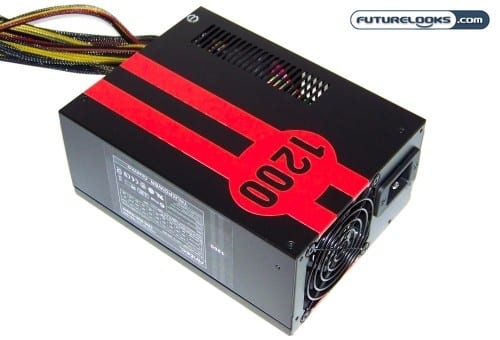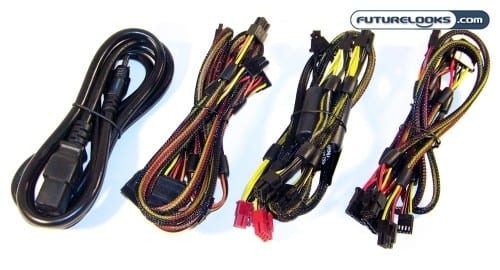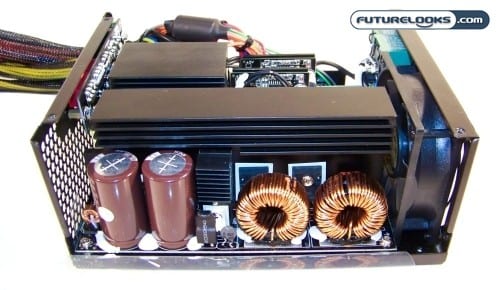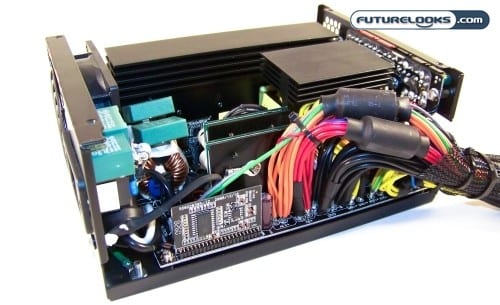TruePower Quattro 1200 Style

Thank goodness, the red box does not indicate the unit’s color. Rest assured, it follows the rest of the TPQ series sporting a long jet black chassis and twin racing stripes. In the case of this power supply, the number “1200” is emblazoned on the top and bottom. This is reminiscent of classic sports cars like the Shelby GT that once ruled zero to sixty. The unit offers both hardwired and modular style cabling. Hardwired to the unit, you’ll find a 24-pin, 8-pin auxiliary, split 8-pin auxiliary, two 8-pin PCI Express, three SATA, three standard 4-pin, and floppy 4-pin cables. This is the perfect amount of cables needed for the typical enthusiast system running dual video cards.

In the modular bundle, there are extra cables for eight SATA, six 4-pin with Floppy, and two more 8-pin with 6-pin combo cables. With all the hardwired cabling in place, chances are that you won’t even need the modular cables, but they’re here if you need them. Now, if we only had something to put them in…
Speaking of cabling, you can see the in-line PowerCache capacitors attached towards the end of each of the cables. The PowerCache caps make it so there’s at least an inch or so unbraided just before the connector. Now that we understand why, it’s not a big deal. We doubt anyone will notice much considering the grade of PC that will be using this PSU.
Overall, the cable wiring feels pretty stout and stiff. The connectors make a solid, immovable connection as well. We definitely didn’t notice any slack indicating the possibility of wiggling out of place. This is important especially when it comes to power hungry components that rely on the connection.
Checking Out the TPQ-1200 Engine
Some folks say that if you’ve seen one, you’ve seen them all. That’s true in a sense because they all have a similarly engineered designs using many of the same components. However, we have the heart of a Ferrari hiding underneath the hood of the TPQ-1200!

First off, there are large Nippon and smaller Sanyo capacitors used every where. The two main largest are Nippon 420V 330uF capacitors which are the power supplies main life line. At the heart of the unit are several good quality switching transistors connected to some serious black heat sinks. Even the two small controller boards are quality made which makes me feel even more confident about this unit.

As for the circuit boards, the solder joints are top notch at every connection on every PCB. There’s plenty of extra soldering throughout, especially in the areas where larger power components are used. Though this may seem trivial, it ensures there is no room for error during operation.
With the help of some handy engineers, we were able to find out that the in-line PowerCache capacitors at the end of each cable are also Nippon. These are well known for being extremely reliable and of good quality. They’re also more expensive than other capacitors.
No doubt, you noticed that there is a single, puny 80mm cooling fan inside the chassis. Why you ask? Higher efficiency power supplies waste less wattage causing less heat, thus there’s no real need for extreme cooling. As long as it’s a high efficiency unit, a meager 50 cubic feet of air should do the trick. The problem will be noise especially if this is in an uncommonly hot room and the fan needs to kick into high gear. However, as long as the unit is installed in a decent computer case with decent air flow and the room is of a comfortable temperature, the fan should be just fine.
